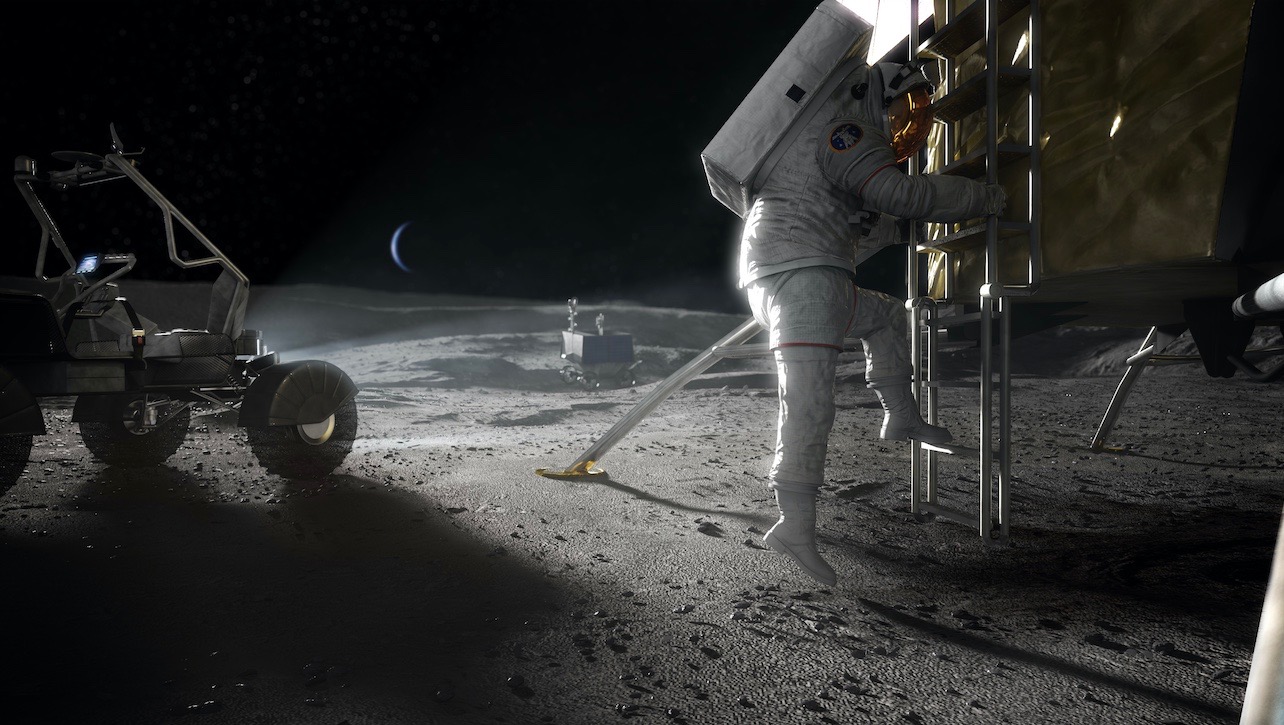NASA opens Nighttime Precision Landing Challenge to help future moon missions
The designs aim to land moon spacecraft safely in the dark.

NASA wants your help to safely land future lunar spacecraft in the dark, including permanently shadowed craters that may be icy.
The agency's new Nighttime Precision Landing Challenge No. 1 plans to award as many as three prizes of up to $650,000 each. The challenge asks applicants to create sensors able to detect hazards from at least 820 feet (250 meters) high and to process the information as the landing is taking place, allowing for a safe touchdown.
Registration is due May 5 and full applications are due May 19. The agency notes that this technology will assist with its goals of long-term lunar exploration. Its main programs include the Commercial Lunar Payload Services program to put small commercial spacecraft on the moon as soon as this year, and the Artemis program aiming to eventually send humans; the uncrewed Artemis 1 is set to fly around the moon this spring if the schedule holds.
Related: NASA prepares for moon's dark south pole in eerie lights-out 'spacewalk'
"This [challenge] is an exciting opportunity for industry to offer solutions that address one of NASA's critical goals for space exploration and scientific discovery,” John Kelly, program manager for NASA's Flight Opportunities program at Armstrong Flight Research Center in California, said in an agency statement Tuesday (Feb. 15).

The hope is to bring spacecraft as close as possible to predetermined exploration resources, including water ice in permanently shadowed craters. Landing in darkness or shadowed areas, the agency said, is still difficult even in an era where precise landings are more feasible than ever.
Mars missions such as the Perseverance rover that touched down with autonomous landing tech in 2021 are getting better at the task, for example, but that was always in full daylight. NASA is also looking for further advancements in cost-effective, lightweight landing vehicles.
Get the Space.com Newsletter
Breaking space news, the latest updates on rocket launches, skywatching events and more!
"This challenge is an important step in the search for innovative technologies that will enable robotic and crewed missions to pursue landings in hazardous terrain," Kelly said.
Sensor systems could use radar, lidar, optical or other measurements, as long as these sensors can create three-dimensional maps and detect hazards during landing maneuvers powered by rockets. "Successful sensor systems will drive down the size, mass, power, and cost beyond the current state of the art," NASA added in the same statement.
The challenge is offered through NASA's TechLeap Prize, funded through NASA's Flight Opportunities program. Another program prize, called Autonomous Observation Challenge No. 1, is testing payloads on high-altitude balloon flights this summer.
Follow Elizabeth Howell on Twitter @howellspace. Follow us on Twitter @Spacedotcom or on Facebook.
Join our Space Forums to keep talking space on the latest missions, night sky and more! And if you have a news tip, correction or comment, let us know at: community@space.com.

Elizabeth Howell (she/her), Ph.D., was a staff writer in the spaceflight channel between 2022 and 2024 specializing in Canadian space news. She was contributing writer for Space.com for 10 years from 2012 to 2024. Elizabeth's reporting includes multiple exclusives with the White House, leading world coverage about a lost-and-found space tomato on the International Space Station, witnessing five human spaceflight launches on two continents, flying parabolic, working inside a spacesuit, and participating in a simulated Mars mission. Her latest book, "Why Am I Taller?" (ECW Press, 2022) is co-written with astronaut Dave Williams.









